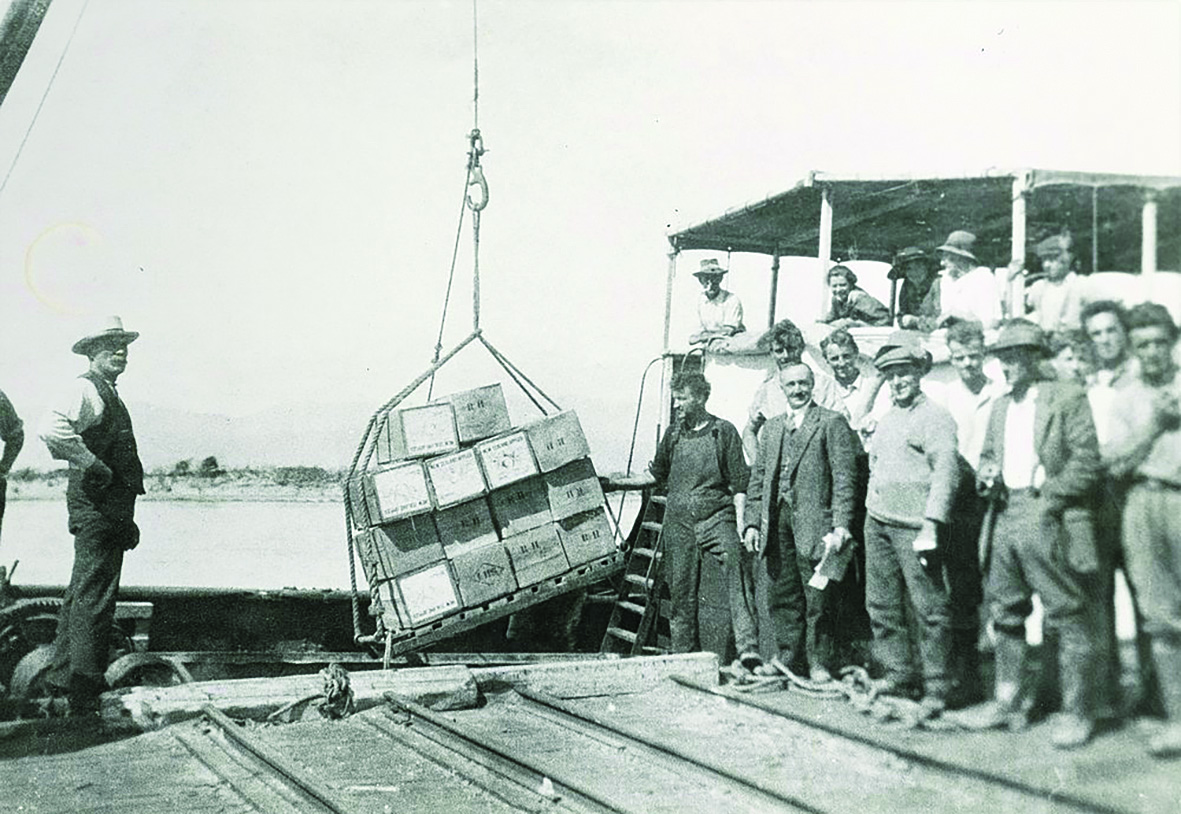History: Tasman’s boom in fruit growing

Shipment of apples leaving Mapua wharf, 1919. Photo: Waimea South collection, Tasman Heritage.
ROBYN PARKES
Around 1910, as the soil of the Moutere Hills became recognised for being suitable for fruit culture, the landscape underwent a complete change.
Acres of land thick with manuka, gorse, and fern were cleared, ploughed and planted with young fruit trees which grew well in the clay soil having previously been considered unproductive.
The development was swift, for within two years the beginnings of the establishment of a fruit industry promised to do for the Nelson district what dairying had done for Taranaki.
The Moutere Hills area comprised of around 20,000 acres of undulating country, the low hills running in a northerly direction to the sea. The higher country was deemed to be valueless from a commercial point, but the low-lying hills promised to be a good source of income when the orchards were in full bearing.
In 1910, Arthur McKee of Riwaka, foreseeing the possibilities for fruit growing, obtained an option over some 2600 acres lying between the head of the Moutere Inlet and Mr. W. Stafford’s Ruby Bay Estate. The area was cleared and ploughed for fruit trees. On this land experiments were carried out by the orchards division of the Agricultural Department, under the direction of Mr J. Thorp, Government orchard inspector.
One hundred and fifty varieties of trees including apples, pears, peaches, apricots, and plums were tested with various kinds of manures, all with the object of ascertaining the best varieties to grow in Tasman, and the best fertilisers to use.
The largest of the developed areas was the Bronte estate 2200 acres, at the mouth of the Waimea River. Other estates were Seaton, at the Western Entrance, the Bell property at the head of Gardner’s Valley and Ruby Bay estates. These were all sub-divided, many sections having been disposed of and converted into orchards.
Private individuals also acquired land in the vicinity and planted large areas in orchards. Messrs. Bisley Bros purchased 600 acres at Upper Moutere and named it “Mildura”.
In Redwood’s Valley, on the eastern side of the Moutere Hills, R. Jackson and C. Harley each planted large areas.
Planting on a smaller scale also occurred on the settled parts of the Moutere and Redwood’s Valley. With what was accomplished in two years it was felt that if the same rate of progress was maintained the prediction was made that in 10 years’ time the export of apples from the Nelson district will total hundreds of thousands of cases annually.
Companies were formed to buy land such as Tasman Fruitlands Ltd. This company followed the system adopted in America for the supervision and management of orchards on behalf of absentee owners or those unable to reside on their holdings.
Mr. Nottage, a well-known fruit expert, was their supervisor and orchard manager. Under his direction the owners could have their sections prepared, planted and looked after until such time as the owners desired to take them over. The company employed teams and labour to clear and plough the land, purchase the necessary fencing, drainpipes, and trees. They also planted and cultivated the orchards, and as the trees grew, looked after the spraying, pruning, etc - all done for a fixed fee.
There were setbacks and failures for some due to inexperience, but the combination of great soil, climate and know-how ensued the district would become unsurpassable in fruit growing, in particular, apples.
By the 1920’s Tasman was one of the main producers of pip fruit with around 114,000 cases shipped from Mapua wharf in 1925.
